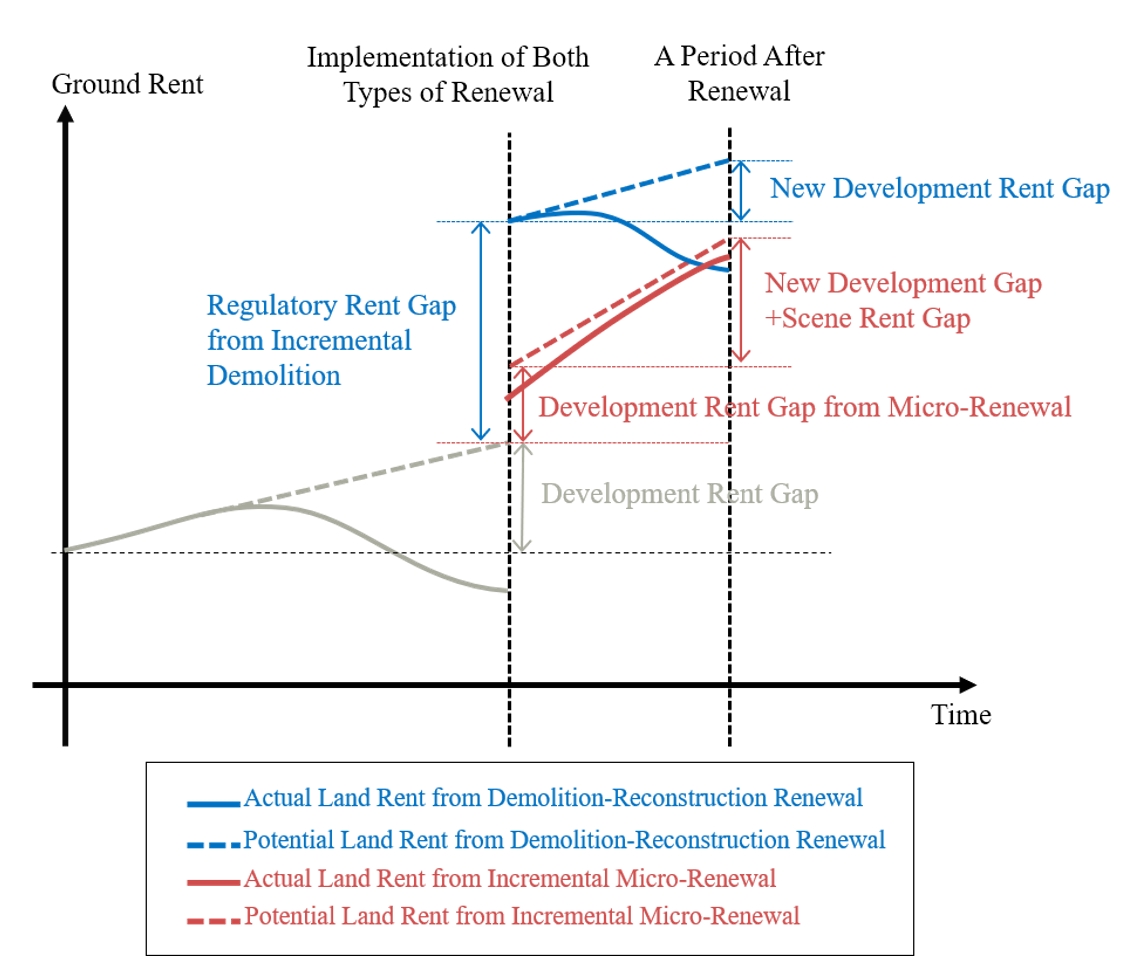
Reinterpretation of the Dynamics of Urban Renewal Based on Multiple Rent Gaps: Taking Langyuan Vintage and Tianzifang as Examples
Table of Contents
Publication - This article is part of a series.
Abstract #
Under the requirement of limited or even negative urban land increment, understanding the motivations for urban regeneration and promoting sustainable regeneration practices constitute crucial issues in the contemporary planning studies. Applying the rent gap theory, the paper breaks down the land rent gap into four components: depreciation rent gap, development rent gap, rule rent gap, and scenario rent gap, with the latter being a novel concept inspired by Clark’s scenario theory. The paper also examines the causes, characteristics, and dynamics of various rent gaps in urban regeneration, and explains the rationale behind market players’ choice between demolition-redevelopment and micro-regeneration. Using Langyuan Vintage Cultural and Creative Industrial Park and Tianzifang area as cases, the paper analyses the patterns of rent gap changes in the regeneration process. It argues that future urban regeneration requires a healthy and sustainable multiple rent-gap structure. In addition, the paper suggests that scenario rent gap should be valued, the possibility of incentivizing the realization of scenario rent gap with regular rent gap should be explored to enhance the momentum of micro-renewal, and institutional support should be provided to promote the sustainable increase of scenario rent gap.
在存量规划的背景下,探讨在城市有限增量甚至是减量要求下更新的动力来源,推动城市存量空间更新能够 以良性可持续的方式发展,是城市更新中极为重要的课题。基于租差理论,将传统的土地租差分解为折旧租差、发展租差、规则租差和场景租差等 4 个部分,形成多元租差的解释框架。其中,创新地在克拉克的场景理论基础上提出场景租差概念。基于多元租差框架,梳理各类租差的成因、特点及在城市更新中扮 演的动力角色,进一步解释市场主体对 拆除重建式更新与微更新的选择逻辑。 以“朗园 Vintage”文创产业园和田子坊 地区为例,通过案例分析总结其更新过 程中租差变化的规律。提出:在未来的城市更新中要形成良性可持续的多元租 差结构;重视场景租差效益,探索以规则租差激励场景租差实现的可能性,提升微更新动力;提供自上而下的制度保障,促进场景租差的持续增长。
Keywords #
multiple rent gap; urban renewal; scenario rent gap; Langyuan Vintage; Tianzifang
多元租差;城市更新;场景租差;“朗园 Vintage”;田子坊
